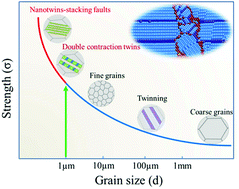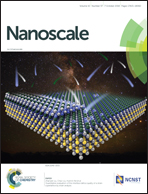Nanoscale coherent interface strengthening of Mg alloys†
Abstract
Structural materials with higher strength and ductility could reduce weight and improve energy efficiency from the ecological and economical viewpoints. However, most classical strengthening strategies, such as refining grain size and forming secondary particles, can effectively hinder dislocation motion but remarkably decrease ductility. In this research, a nanoscale contraction twins-stacking faults (CTWSFs) hierarchical structure was achieved in a model sample of magnesium–lithium (Mg–Li) alloy using an industrial ultrahigh pressure technique. The specific yield strength and elongation of the treated Mg–Li alloy were ∼179 kN m kg−1 and ∼25% at room temperature, respectively. Both of these are the highest values reported so far, even compared to commercial aluminum alloys and steel. Depending on molecular dynamics simulations, it was demonstrated that the basal-plane stacking faults (SFs) attribute to the nucleation of contraction twins (CTWs), but prevented the broadening of the CTWs. The results were confirmed using ex situ transmission electron microscopy. The models also verified that the unique structure of nanoscale coherent boundaries-basal-plane SFs were effective in preventing dislocation motion in a single Mg crystal, which was analogous to twin boundaries. Finding this new CTWSFs structure might provide an alternative perspective for designing more innovative hexagonal close packed (hcp)-type structural materials with superior mechanical properties.



 Please wait while we load your content...
Please wait while we load your content...